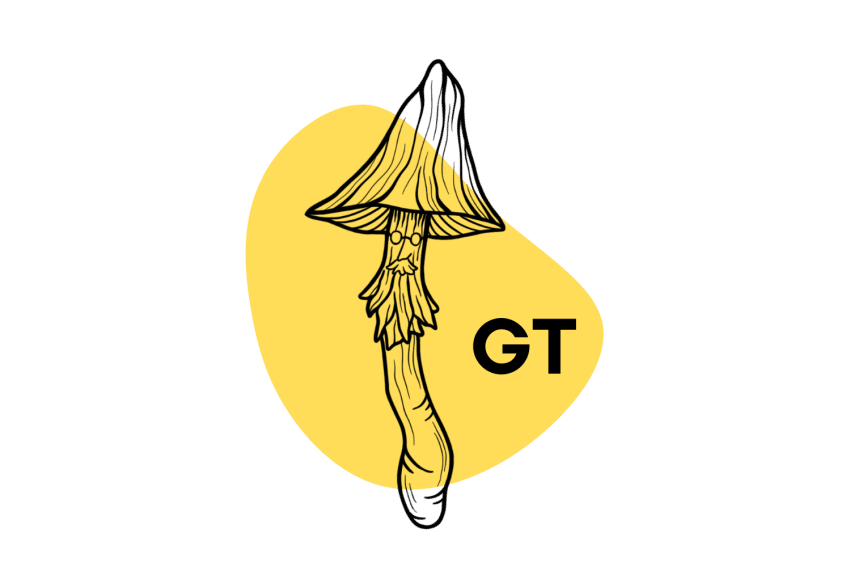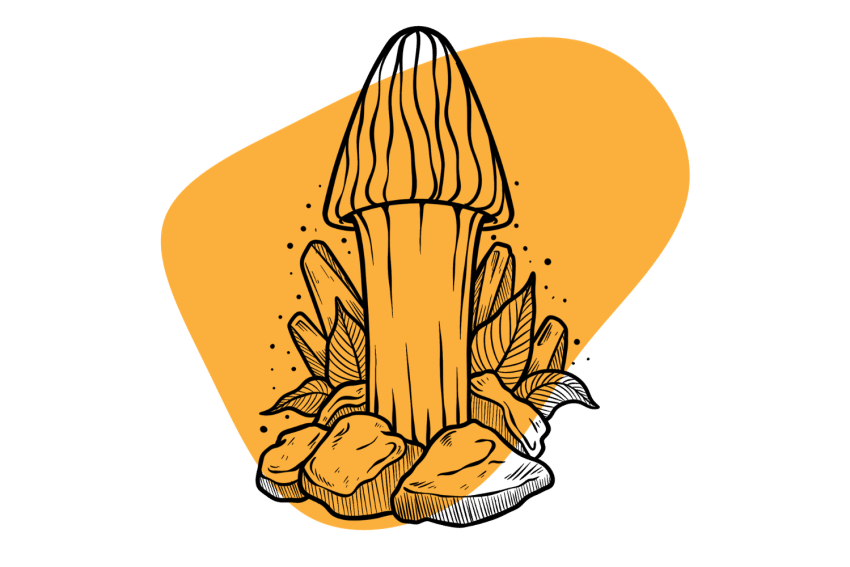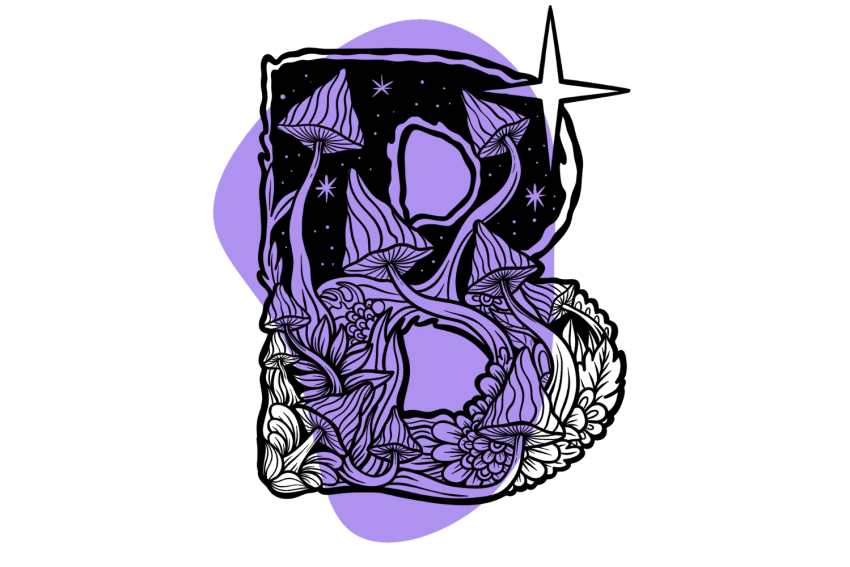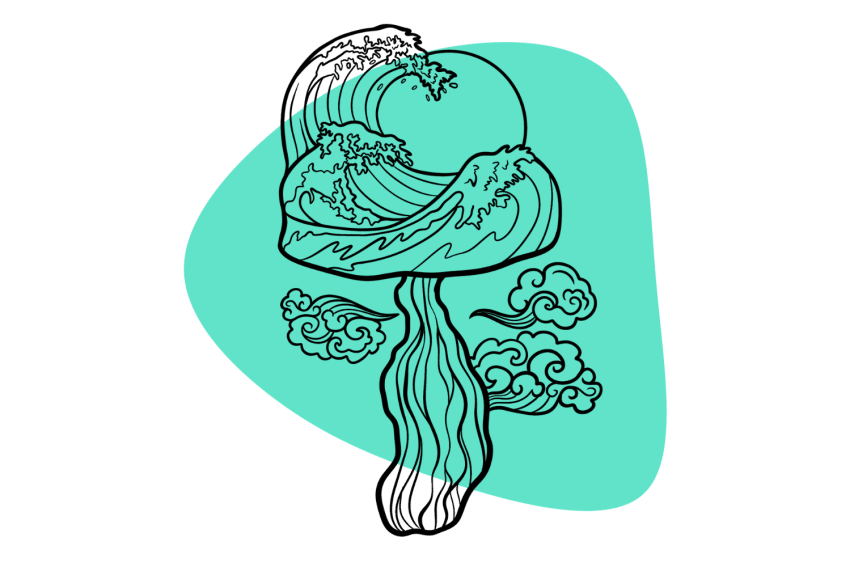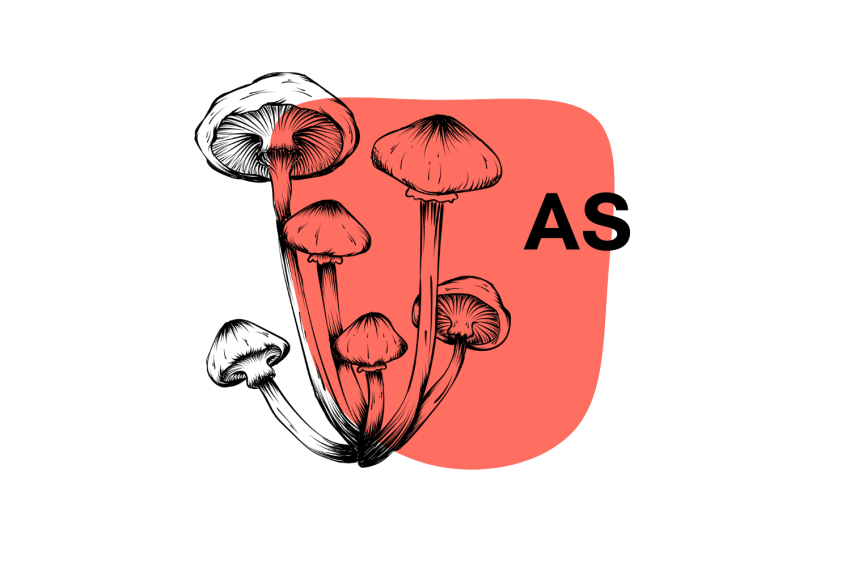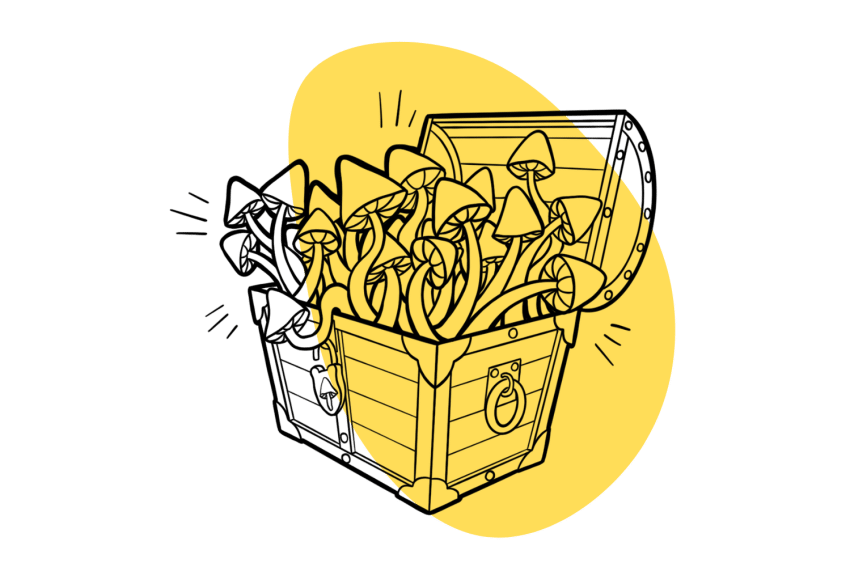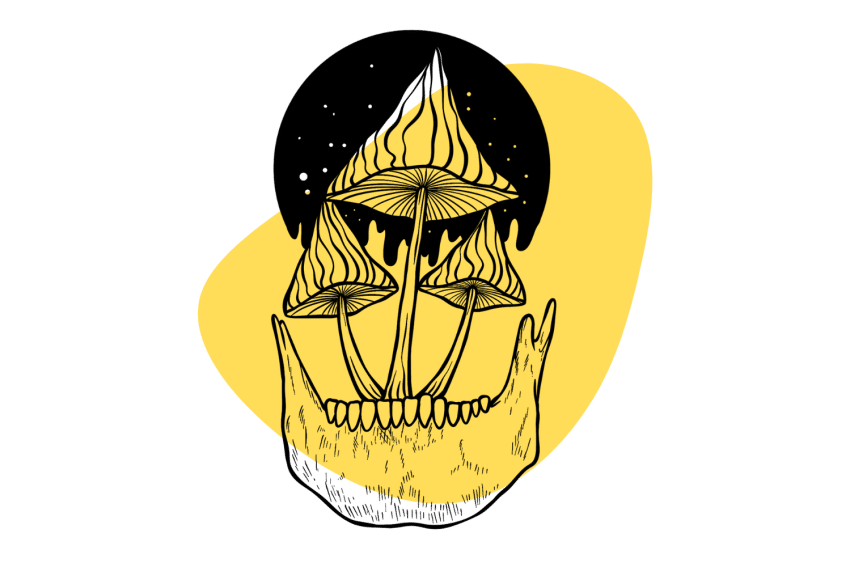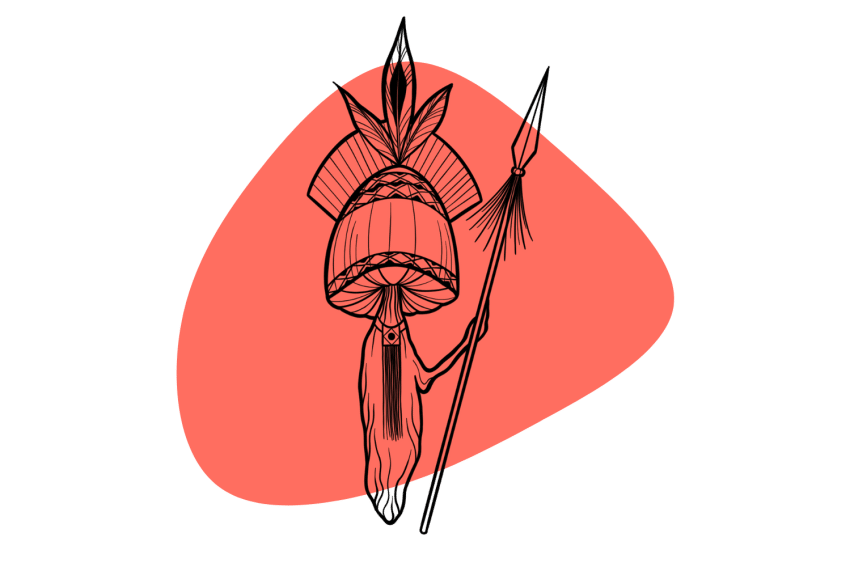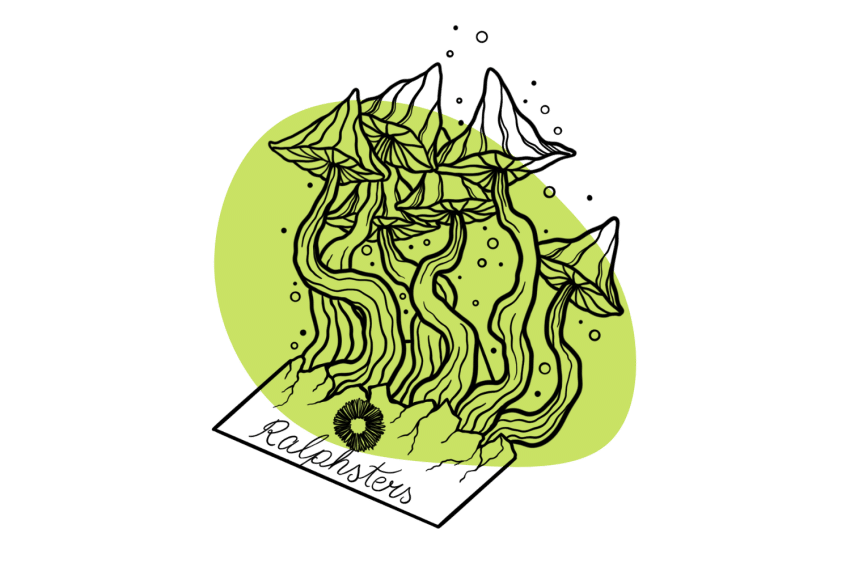The Chitwan Strain: A Mystical Nepalese Shroom
This legendary strain doesn’t the attention it deserves.
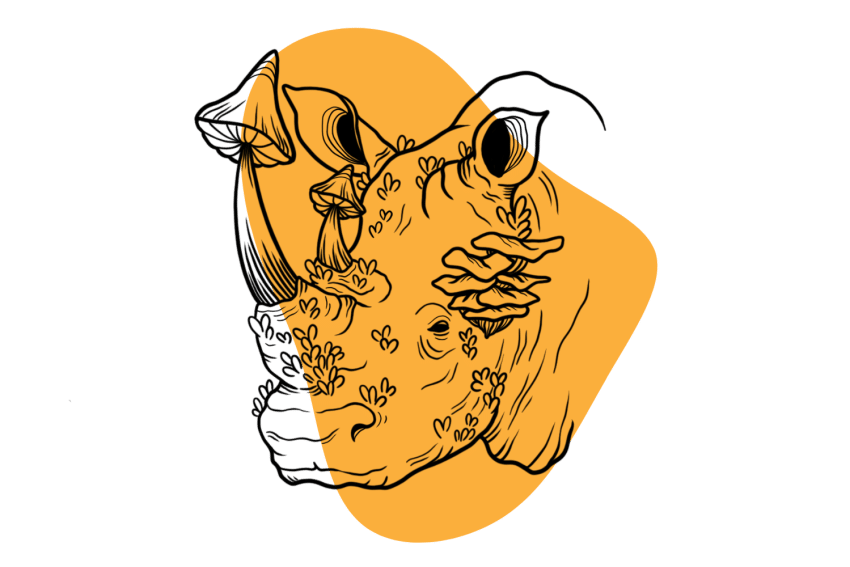
John Allen discovered this strain in the Chitwan region of Nepal, high in the mountains. Supposedly, three original specimens were found outside the “mushroom season,” growing in a patch of what appeared to be a rhino or elephant dung.
After its collection, the spores took a while to start circulating the market. For a long time, Chitwan spores were hard to come by. Now, Chitwan genetics are available in the form of prints and spore syringes from various vendors.
Overall, this is a well-balanced strain. With medium-sized mushrooms of above-average potency, the possibility of multiple dense flushes, and reasonable contamination resistance, it’s a good choice for most shroom enthusiasts.
This attractive strain isn’t the best option for the beginner looking for their first magic mushroom to cultivate, but it’s ideal for someone with a few grows under their belt and who wants to try something different.
In this article, we’ll be delving into the origins of the Chitwan strain, its potency, its genetic relatives, where you can find spore samples, and how you can produce the best results from this strain.
Chitwan Strain Specs
| Potency | Above Average 💪 |
| Cultivation | Intermediate |
| Species | Psilocybe cubensis |
| Substrate Recommendation | Rye Grain & Dung |
| Cost | $$ |
| Sold By | Sporeworks, Spores 101, Sporestore |
History of the Chitwan Strain
The Chitwan strain was originally collected by the famous mycologist John Allen in the 90s during his trip through Asia. It was supposedly discovered growing in a patch of what looked like rhino or elephant dung up in the mountain region of Chitwan in Nepal.
Unfortunately, apart from this minute piece of information, we don’t know much more about the origins of Chitwan. The mushroom is quite common in Nepal and grows in a variety of different areas in the mountainous regions. We can assume that this mushroom is engrained in Nepalese psychedelic culture and has been used for centuries.
Nepal is famous for its drug culture. Psychedelic fungi, cannabis, and a range of other psychedelic herbs have been used for centuries in ceremonies and for healing.
Annually, Nepal attracts thousands of tourists annually interested in “psychotourism.” They travel there solely to ingest psychedelic substances to reach another level of consciousness. No doubt, close relatives of the Chitwan magic mushroom strain have been used ceremonially for centuries.
Chitwan Potency & Psilocybin Content
The Chitwan mushroom is above-average in terms of potency. Some users compare this shroom to other high-altitude strains, such as Kathmandu, Ecuador, and the Chilean strain.
We don’t know the average psilocybin or psilocin levels of the Chitwan strain because test samples have not yet been published. The strain hasn’t been entered into an Oakland Hyphae Psilocybin Cup.
Based on user reports, it’s most likely the Chitwan strain falls somewhere in the range of 0.60% to 1.00% tryptamines.
Chitwan Variations & Genetic Relatives
There are a few different strains that may be related to the Chitwan strain. Nepal has a diverse landscape, and many habitats are prime for mushroom growth. These perfect environments mean that psilocybin-containing mushrooms are plentiful, and several Nepalese Psilocybe cubensis are likely present.
Although we know Nepal is full of psychedelic fungi, very few samples have made it back to the west. However, there is one other Nepalese strain that’s becoming more popular. The Kathmandu strain shares several similarities with Chitwan and is likely a very close relative.
Where to Buy Chitwan Spores
Chitwan spore samples used to be pretty hard to come by. If you wanted to source the genetics of this strain a couple of decades ago, you’d either have to know someone or take a flight to Nepal and get searching. Luckily, it’s not that way today.
Chitwan genetics are available from most large-scale spore vendors. They can be found for sale online in the United States, Canada, and Europe from trustworthy vendors that are reliable and well-known.
If you’re based in the United States of America, you’ll be able to source Chitwan spores from places like Sporestore. These vendors have been around for a long time and have a fantastic rapport with their customer bases. They stock Chitwan genetics in the form of spore syringes and prints, depending on the vendor you choose.
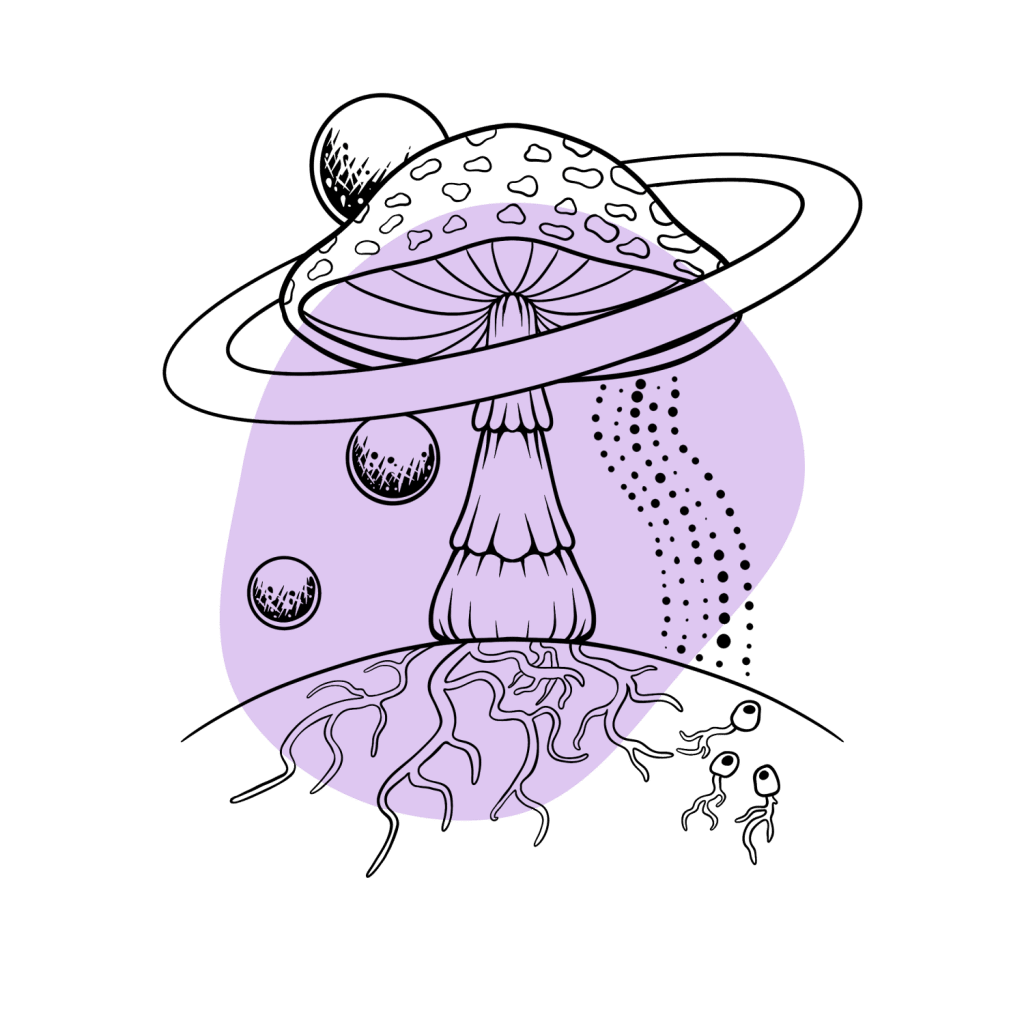
If you’re looking for Chitwan spores in Europe, Sporeworks is a good vendor to look at. They sell Chitwan spores in the form of sterile spore syringes and prints. This vendor is located in the United States, but they do ship to Europe. However, this does mean shipping can take anywhere from three to eight weeks to reach mainland Europe.
If you’re looking for Chitwan spores in Canada, Spores101 is a decent vendor option. Spores101 has been around for decades and has a fantastic reputation. They stock Chitwan genetics in the form of sterile spore syringes and prints. This vendor also ships within the United States.
How to Grow Chitwan Mushrooms
Chitwan mushrooms can be grown the same way as most other Psilocybe cubensis strains.
The easiest cultivation method for beginners is PF-Tek. This method involves taking sterile jars of substrate and inoculating them using a spore syringe full of Chitwan genetics. Once the jars are colonized, the resulting mycelium cakes can be removed.
The mycelium cakes are then transferred to a fruiting chamber. This is a box with a layer of growing substrate coating the bottom. The box is then left in a warm environment and regularly sprayed with a fine mist to ensure the internal environment stays humid.
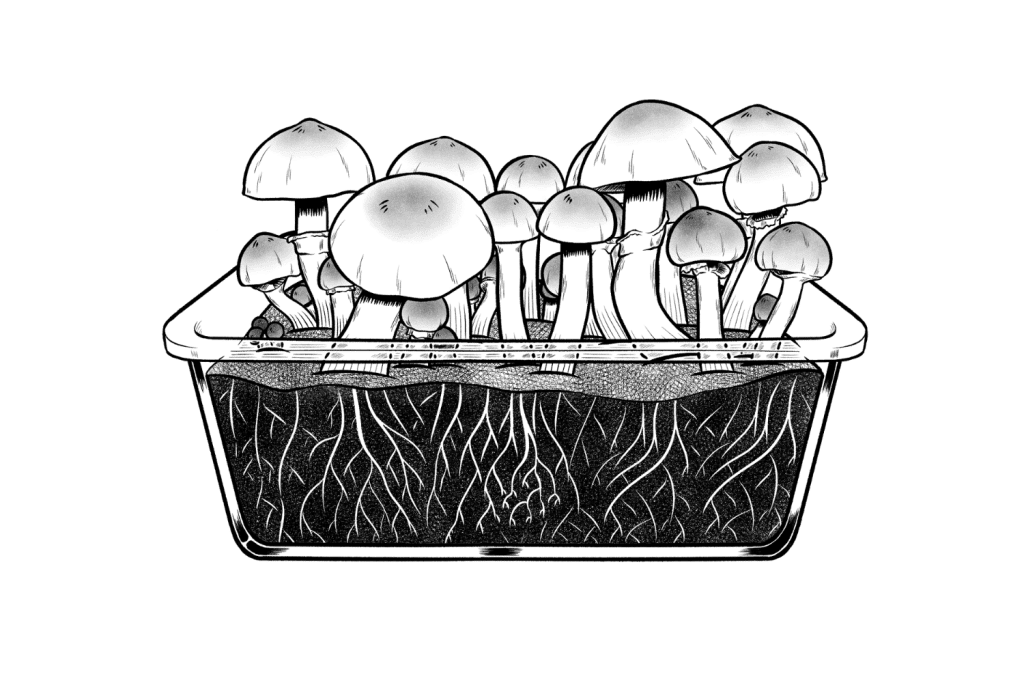
The cakes will begin to produce fruiting bodies. These are then harvested as they mature before they begin to drop their spores. The cakes will continue to produce shrooms until they eventually succumb to mold after three to five flushes.
Of course, this is just a brief rundown of growing magic mushrooms. There’s much more to it than this, and each step requires great care. If you want to learn how to grow shrooms, check out this step-by-step guide on how to grow magic mushrooms.
If you want to grow Chitwan shrooms, you should use pasteurized manure. These shrooms often grow in dung in the Nepalese mountains, where they flourish naturally. Although the recommended substrate for the Chitwan strain is manure, it’s not your only option. They will also do well on rye grain or BRF (brown rice flour) cakes.
Similar Strains
Chitwan is a fantastic option for beginners because of it’s easy-going, yet strong effects. The dosage equivalent of this mushroom is similar to that of Golden Teachers — which have become a standard for assessing the effects of magic mushrooms.
This strain isn’t the easiest to grow, so people looking for a good starter mushroom for the purposes of cultivation should look at strains like Koh Samui, Cambodian, or Golden Teacher instead.
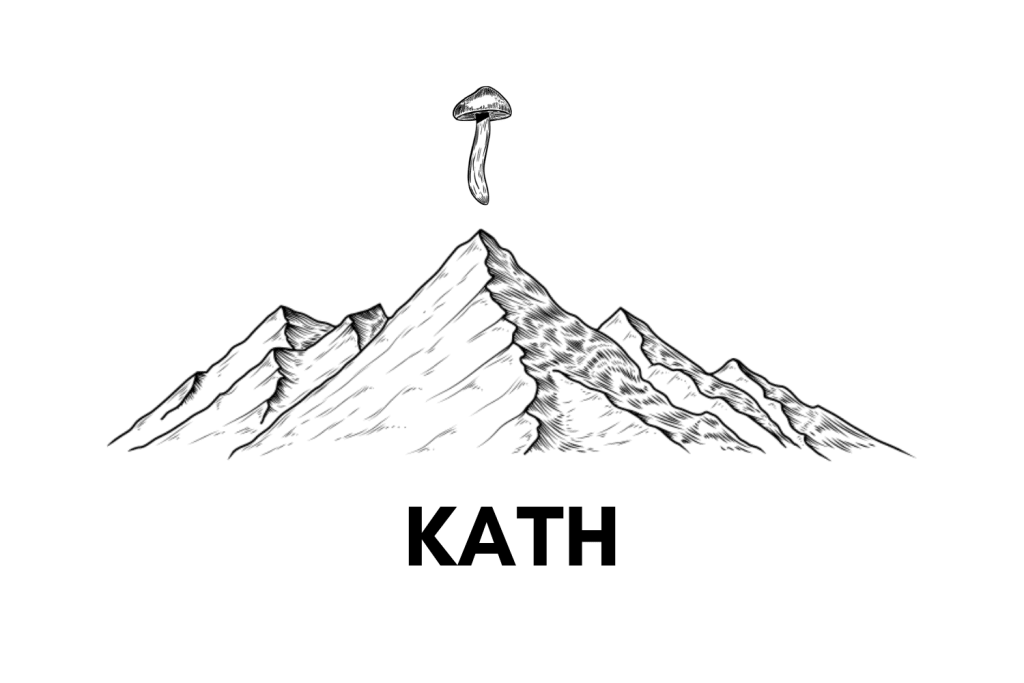
Kathmandu (KATH)
The Kathmandu strain is named after the capital city of Nepal. Its origins are unclear, but many suspect that it was collected by John Allen during the same trip when he collected Chitwan.
Kathmandu is a well-rounded strain, and it shares many similarities with the Chitwan strain. These two strains look incredibly similar and are just as potent as each other. However, Kathmandu is said to be far easier to grow because of its excellent contamination resistance and aggressive colonization speed.
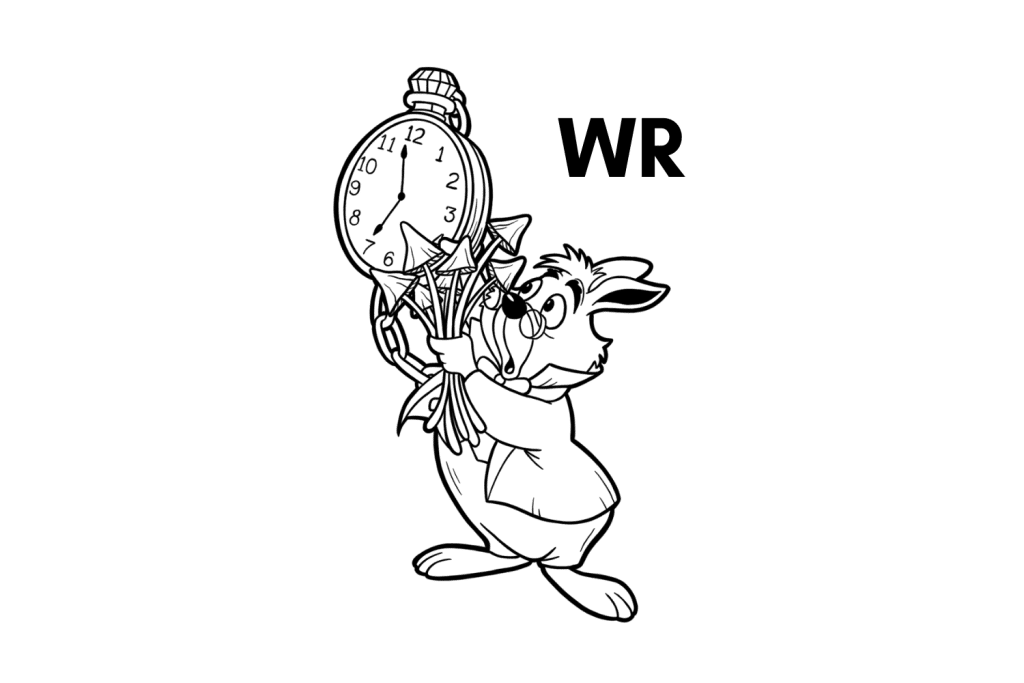
White Rabbit
The White Rabbit strain is a highly-potent albino strain that was developed by a group of Dutch cultivators. This strain could take on the likes of Penis Envy and Tidal Wave in terms of its potency. The mushrooms are ghostly white and take on a bluish hue when bruised and dried.
Surprisingly, White Rabbit is relatively easy to grow. However, being an albino strain, it’s not without its challenges. This strain is great for beginner to intermediate growers that want to cultivate a highly potent strain with some interesting aesthetics.
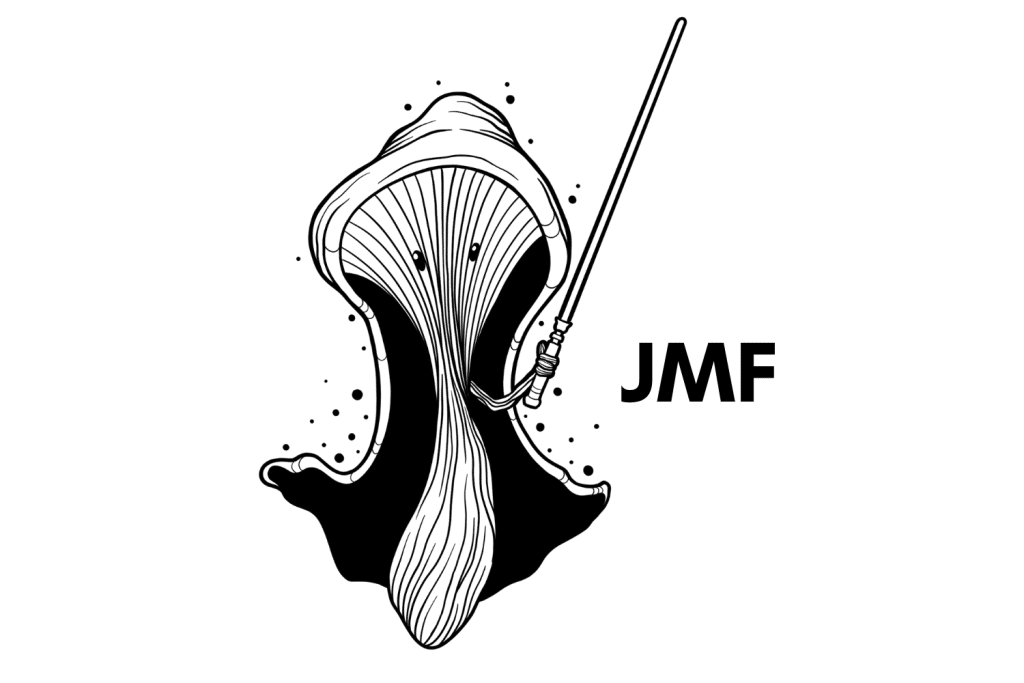
Jedi Mind Fuck
The origins of the Jedi Mind Fuck strain are unknown. However, as the name suggests, this strain is highly potent. It’s a genetic off-shoot of the Z-strain. Surprisingly, it’s relatively easy to grow, provided you have some experience and a decent setup for mushroom cultivation.
Jedi Mind Fuck is renowned for its strong, long-lasting effects and deliriant-like qualities. The fruiting bodies are quite short and fat, with white stems that are wider at the base and a tanned cap that’s almost conical when mature.
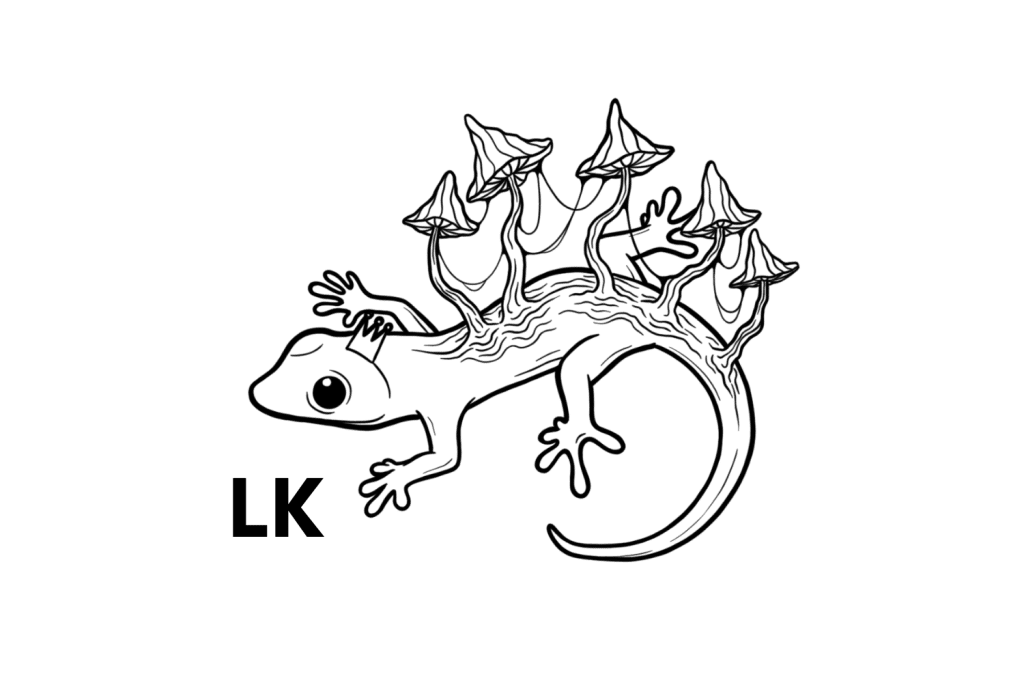
Lizard King
The Lizard King strain is named after the anonymous mycologist that discovered it. It was collected in Mexico and was noted to be growing on wood which is rather odd for a Psilocybe cubensis strain.
This strain has above-average potency and is ideal for the intermediate cultivator with some experience. The mushrooms are light in color with darker caps. The caps themselves are tanned and have a distinct nipple on top.
Strains vs. Species: What’s The Difference?
Chitwan is a strain of the Psilocybe cubensis species.
Strains are genetic variants within a species. A single species can contain hundreds, if not thousands, of different strains. Visual and chemical traits can differ quite drastically from strain to strain, but the basic genetic composition will be the same.
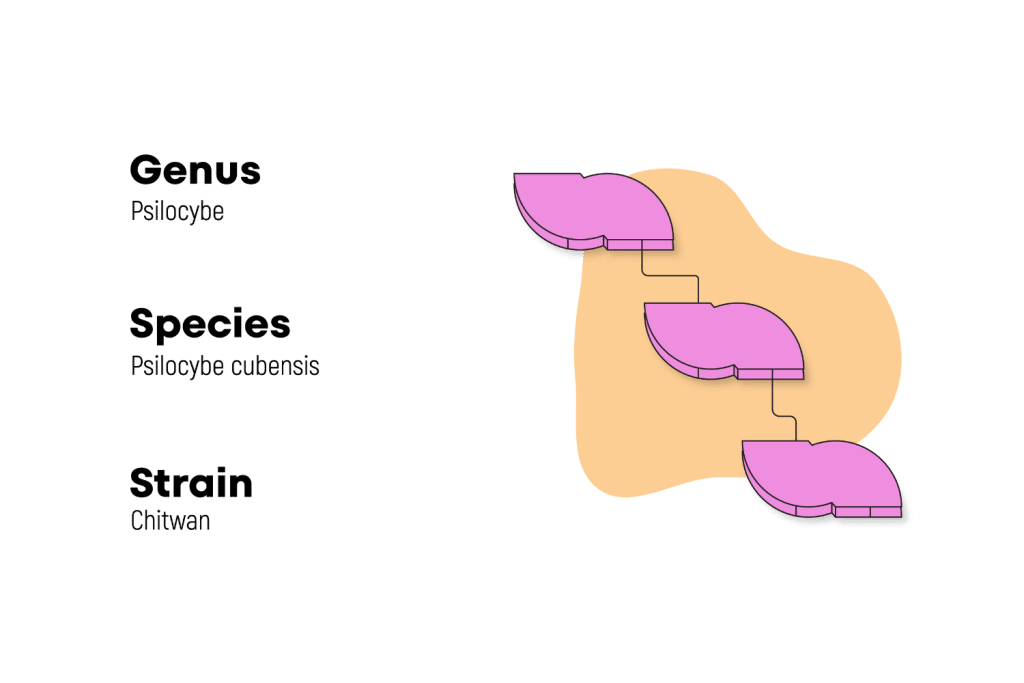
Take psilocybe mushrooms, for example. The Psilocybe cubensis species contains many different genetic variants (strains). Although all of these strains fall under the same species, they can be extremely different. Just compare Penis Envy to Golden Teachers — one is super potent and can be tricky to cultivate, and the other is easy to cultivate but far less potent.
Other strains within the Psilocybe cubensis species can differ in appearance, size, colonization speed, and growth rates. That’s just one species too. As with Psilocybe cubensis strains, there exist hundreds of different psychoactive mushroom species.
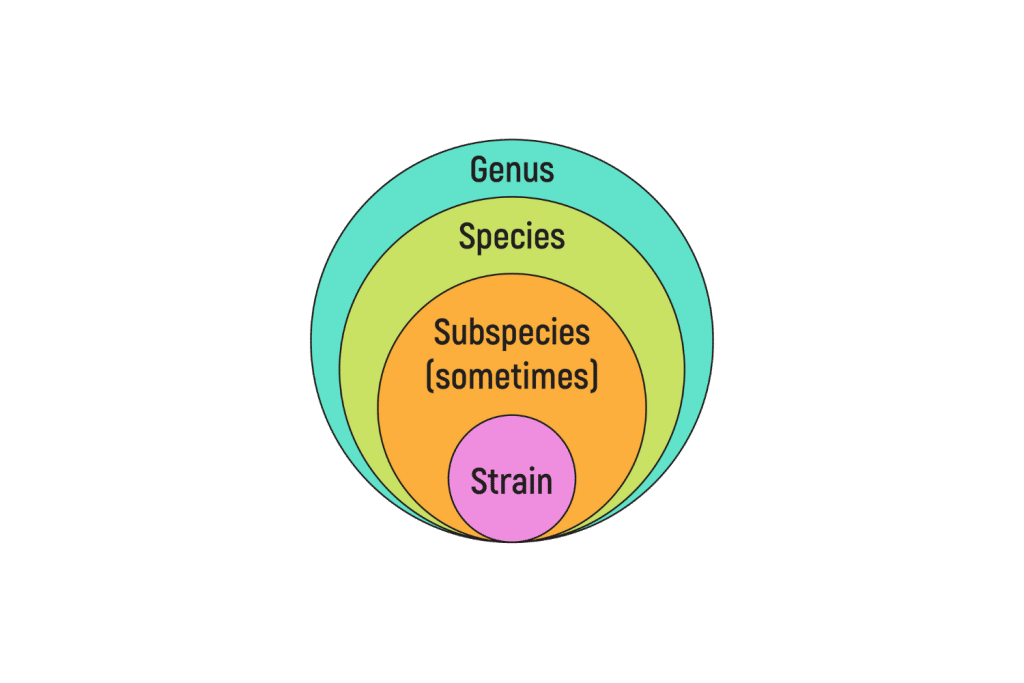
Mushrooms aren’t the only organism to have several different strains.
In the plant kingdom, you’ll find thousands of genetic variants. Just look at the Japanese maple for example. This species (Acer Palmatum) has been crossbred to create strains that look vastly different. Differences in leaf shape, growth traits, and colors can be seen between strains of this species.
Another good species to look at is cannabis. The two species, Cannabis sativa, and Cannabis indica, have over 700 different genetic variants. These strains all have differing traits — some have high levels of THC (tetrahydrocannabinol), some have high CBD (cannabidiol) levels, some contain terpenes that produce citrusy notes, and others smell musty or piney.

